Ballistic, cruise and anti-aircraft missiles in the exposition of the Military Museum of the Chinese Revolution
War Museum of the Chinese Revolution. In this part of the tour of the Military Museum of the Chinese Revolution, we will get acquainted with the available ballistic, cruise and anti-aircraft missiles. Among the aircraft with jet and piston engines, placed on display on the ground floor of the museum, there are ballistic and cruise missiles. Over aviation with the equipment presented on the ground floor, almost abutting the ceiling, DF-1 and DF-2 ballistic missiles rise.
The Soviet R-2 ballistic missile had much in common with the R-1 missile, which in turn was created on the basis of the German V-2 (A-4). To increase the range in R-2, a warhead detached from the missile body was used. In addition, a fuel tank made of light aluminum alloys was used to reduce weight. The new RD-101 engine was lighter and had increased traction. To improve the accuracy of the hit, the control equipment was supplemented with a lateral radio correction system that reduces the parallel rocket drift. In the standard version, the R-2 had a high-explosive warhead weighing 1500 kg, equipped with 1000 kg of TNT. The length of the rocket is 17,7 m, the maximum diameter is 1,65 m. The rocket with a launch weight of 20,4 tons had a firing range of up to 600 km.
In December 1957, as part of military-technical cooperation, a production license, a full set of documentation, and several missiles were transferred to the PRC. The Chinese version was named DF-1 ("Dongfeng-1", East Wind-1). The first missile brigade with the Soviet R-2 was formed in 1957, and the first missile division, loudly called strategic, appeared in 1960. Then in China began the formation of the "Second Artillery Corps" of the PLA - an analogue of the Russian Strategic Missile Forces.
By 1961, the PLA already had several regiments equipped with DF-1 missiles, which were aimed at Taiwan and South Korea. However, the technical reliability coefficient DF-1 was low and did not exceed the value of 0,5. In other words, only 50% of the missiles had a chance to hit the target. Given the low accuracy of the fire and the high-explosive warhead, the DF-1s were relatively effective against large cities. The first "Chinese" short-range ballistic missile remained essentially experimental, but at the same time, the Chinese were able to accumulate the necessary knowledge and train personnel. The exploitation of DF-1 in the PRC continued until the end of the 1960s.
The first Chinese ballistic missile, manufactured in significant quantities and equipped with a nuclear warhead (NW), was DF-2. It is believed that when it was created by Chinese designers, the technical solutions used in the Soviet R-5 were used. The missile is single-stage with a four-chamber marching liquid rocket engine. Kerosene and nitric acid were used as components of rocket fuel. The DF-2 had firing accuracy (CWO) within 3 km with a maximum range of 2000 km, this missile could already hit targets in Japan and in a large part of the USSR.
The DF-2 missile was launched from the ground launch pad, where it was installed during the prelaunch process. Prior to this, it was stored in an underground or durable reinforced concrete shelter and was taken out to the starting position only after receiving the appropriate order. In order to launch a rocket from a technical state that corresponded to constant readiness, it took more than 3,5 hours. On combat duty there were about 70 missiles of this type.
October 27, 1966 BR DF-2 was tested with a real nuclear charge, flying 894 km, it hit a conditional target at the Lobnor training ground. DF-2 was initially equipped with a monoblock nuclear warhead with a capacity of 20 kt, which, given the large KVO, was very modest for a strategic missile. In the mid-1970s, it was possible to bring the charge power to 700 ct. DF-2 missiles were available in missile brigades deployed in the west, north and northeast of the PRC until the mid-1980s. After decommissioning, DF-2s were used in various experiments, and for developing radar systems for early warning of a missile attack.
In 1960, the Soviet Union adopted the P-15 cruise anti-ship missile. It had a marching liquid two-component jet engine, which used TG-02 fuel (Tonka-250) and AK-20K oxidizer (based on nitrogen oxides), which were self-igniting in contact with an oxidizing agent. The engine worked in two modes: accelerating and marching. On the marching section of the flight, the rocket flew at a speed of 320 m / s. The firing range of the first modifications of the PKR P-15 reached forty kilometers. An autonomous guidance system was installed on the P-15 rocket, with a radar or thermal GOS, an autopilot, a radio or a barometric altimeter, which made it possible to keep the flight altitude within 100-200 meters above the surface. A high-explosive cumulative warhead weighing 480 kilograms ensured the defeat of warships with a displacement of more than 3000 tons.
In addition to missile boats of Project 183P and several hundred missiles, technical documentation was sent to China for anti-ship missiles P-15M, which allowed their mass production to be launched in the early 1970s at aircraft factory No. 320 in Nanchang. In China, cruise missiles received the designation SY-1, in addition to missile boats, they armed frigates of Project 053 (Jianghu type), created on the basis of the Soviet TFR Project 50 and coastal missile units. The first Chinese-made liquid-propellant anti-ship missile system was adopted in 1974.
At first, the operation of the SY-1 went with great difficulties, the Chinese obviously lacked experience, knowledge and production culture, and the quality of missile production was very low. There were frequent cases of leakage of fuel and oxidizer, which, upon contact, self-ignite, which led to explosions and fires.
Taking into account the complexity of operation and the danger of using rocket engines with liquid propellant rocket engines operating on a caustic oxidizer and toxic fuel, the RCC SY-2 with a solid fuel engine was developed in China. But at the same time, the firing range was less than that of a rocket with a rocket engine.
The further development of the Chinese anti-ship missiles was aimed at increasing the speed and range of flight, the noise immunity of the seeker and the warhead power, which led to the creation of the HY-1 series missiles.
HY-1 missiles were armed with Chinese destroyers, project 051 and coastal divisions. Improved options with a new active radar seeker were designated as - HY-1J and HY-1JA. Missiles of this type carried a cumulative warhead weighing more than 500 kg. The launch of the rocket from the launch vehicle or ground launcher was carried out using a solid fuel accelerator.
The modernization of the HY-1 guidance system and the increase in geometric dimensions led to the creation of the HY-2 anti-ship missile system (C201). Thanks to larger tanks, the flight range increased to 100 km. But at the same time, the increased capacity of the tanks increased the dimensions of the missiles, making it impossible to place them on ship launchers. For this reason, HY-2 anti-ship missiles were used only on coastal missile systems.
Ammunition tanks with fuel and oxidizer were used on the HY-2 anti-ship missiles created in the 1980s. Thanks to this, missiles fueled could be at the starting position for a long time. Their maintenance was also facilitated and the risk for settlements was reduced. To launch the RCC of the HY-2 family, solid-fuel accelerators of increased power were used.
The HY-2A modification missile was equipped with an infrared seeker, and the HY-2B and HY-2G were equipped with monopulse radar seekers, and the HY-2C was equipped with a television guidance system. The probability of hitting a target in the event of its capture by a radar seeker in the absence of organized interference was estimated at 0,7-0,8.
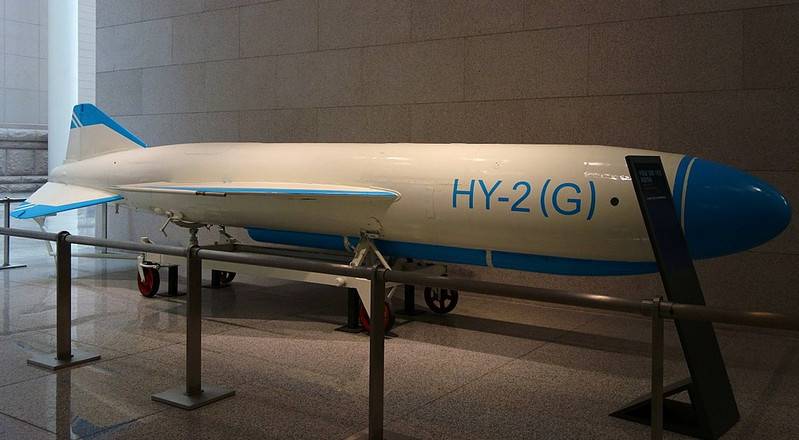
PKR HY-2G
The use of an improved radio altimeter and a programmable controller on the HY-2G modification allowed the rocket to use a variable flight profile.
Chinese experts squeezed everything out of the basic design of the Soviet P-15 anti-ship missiles, creating a line of sea, air and ground-based cruise missiles. Thanks to the introduction of various improvements and an increase in the capacity of tanks with fuel and oxidizer, it was possible to seriously increase the firing range. The introduction of various types of guidance systems for the target, not only improved noise immunity, but also diversified the application for various purposes. In particular, thanks to the use of passive radar seekers, it became possible to destroy working ground and ship radars.
After the implementation of the program to improve reliability and safety, on the basis of the RCC HY-2 in 1977, a modification of the YJ-6 was created, the carriers of which were long-range N-6 bombers. Compared to the HY-2, the YJ-6 missile has a slightly shorter length and launch mass.
This version of anti-ship missiles adopted in 1984 could hit targets at ranges up to 100 km, the probability of hitting a target in the absence of interference by Chinese experts was estimated at 0,7.
In the mid-1980s, the airborne anti-ship missile S611 (YJ-61), created on the basis of the latest HY-2 models, entered service. An air-based missile had less mass, and there were no launch boosters on it. Compared to the early models of Chinese liquid-propelled rockets, the carriers of which were long-range N-6 bombers, the C611 missile has become easier to use and safer. The launch range increased to 200 km, the probability of hitting a target was increased due to the use of noise-protected GOS. Modification C611Y is equipped with a new guidance system built on a solid-state element base. After dropping from an airplane, a rocket flies according to a pre-prepared program, only at the final section using an active radar seeker to search for a target.
A rocket carrying a warhead weighing 300 kg on a marching section has a speed of about 320 m / s; at the final stage of the flight, it can exceed a speed of 400 m / s. The minimum flight height is 50 meters. Airborne liquid anti-ship missiles of the C611 family are still part of the armament of H-6 naval aircraft, but are gradually being replaced by safer models with solid fuel, turbojet and ramjet engines.
In addition to serial products, the museum has a model of the experimental supersonic anti-ship missiles HY-3. The HY-3 missile used warheads and GOS from anti-ship missiles HY-2G. The start was made using four solid fuel boosters.
Two marching ramjet engines running on kerosene started after reaching a speed of 1,8 M and accelerated the rocket to a speed of more than 2,5 M. The firing range was 150 km. Due to the excessive complexity and low technical reliability, the production of HY-3 anti-ship missiles was limited to an experimental batch.
On the ground floor, among armored vehicles and various artillery systems, launchers with anti-aircraft missiles of the HQ-2 anti-aircraft complex, which is a Chinese version of the Soviet S-75 air defense system, are exhibited.
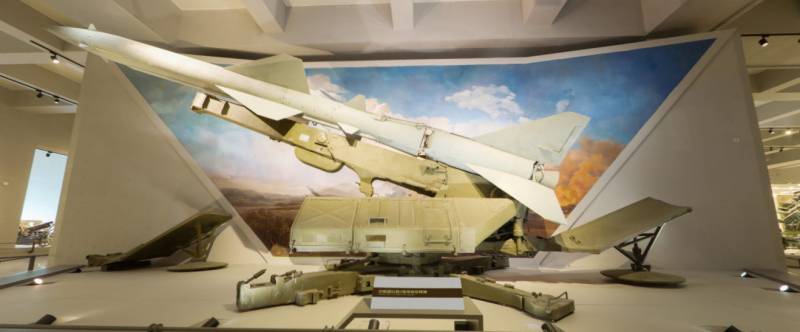
Missile launcher HQ-2 on a launcher in the exposition of the Military Museum of the Chinese Revolution
In the 1950s, Kuomintang Taiwan and Communist China were in fact at war. Over the Strait of Formosa and the adjacent territory of the South China Sea, real air battles regularly took place between jet fighters of the Air Force of the People’s Republic of China and the Air Force of the Republic of China, led by Marshal Chiang Kai-shek. After both sides suffered significant losses in the air, large-scale battles between Chinese and Taiwanese fighters ceased, but the Americans and Taiwanese leadership carefully monitored the strengthening of the military power of mainland China and regular flights of high-altitude reconnaissance aircraft RB-57D and U-2C began over the territory of China , in the cockpits of which were Taiwanese pilots. High-altitude scouts were provided to the island of the Republic of China as part of the free American assistance. If the Kuomintang people tried to open up the preparation of the PLA for the invasion of Taiwan, then the American intelligence services were primarily interested in the course of the implementation of the nuclear program in the PRC, the construction of new aircraft factories and missile ranges.
Initially, Martin RB - 57D Canberra high-altitude strategic reconnaissance aircraft were used to fly over the Chinese mainland. This aircraft was created by Martin on the basis of the British bomber Electric Canberra. A single reconnaissance aircraft had a flight altitude of more than 20 m and could take photographs of ground objects within a radius of up to 000 km from its airfield.
From January to April 1959, high-altitude scouts made ten lengthy raids deep into the territory of the PRC, and in the summer of that year, the RB-57D flew over Beijing twice. The top Chinese leadership was very sensitive to the fact that foreign planes could fly with impunity over the territory of the country and Mao Zedong, despite his personal hostility to Khrushev, requested a delivery weaponscapable of obstructing the flights of Taiwanese reconnaissance aircraft. Although by that time relations between the USSR and the PRC were far from ideal, Mao’s request was granted, and in an atmosphere of deep secrecy, five fire regiments and one SA-75 Dvina technical division were delivered to China, including 62 11D anti-aircraft missiles.
As part of the SA-75 "Dvina" SAM system, V-750 (1D) SAM was used with a kerosene engine; nitrogen tetroxide was used as an oxidizing agent. The rocket was launched from an inclined launcher with a variable start angle and an electric drive for turning in angle and azimuth using a detachable solid propellant first stage. The guidance station was capable of simultaneously tracking one target and pointing up to three missiles at it. In total, the anti-aircraft missile division had 6 launchers, which were located at a distance of up to 75 meters from the SNR-75.
In China, the positions of SA-75 air defense systems were placed around important political and economic centers: Beijing, Shanghai, Guangzhou, Xian and Shenyang. To service these anti-aircraft systems, a group of Soviet specialists was sent to China, who were also involved in the preparation of Chinese calculations. In the fall of 1959, the first divisions serviced by Chinese crews began to take combat duty, and on October 7, 1959, the first Taiwanese RB-20D was shot down near Beijing at an altitude of 600 m. As a result of the close rupture of a powerful fragmentation warhead, weighing 57 kg, the plane fell apart and its wreckage scattered over a large area. The pilot of the reconnaissance aircraft was killed. According to the radio interception station, which controlled the negotiations of the deceased pilot RB-190D, until the last moment he was unaware of the danger, and the tape recording of the pilot’s talks with Taiwan was cut short. The PLA command did not disclose information that the spy plane was shot down, and the Taiwanese media reported that the RB-57D crashed, crashed and sank in the East China Sea during a training flight.
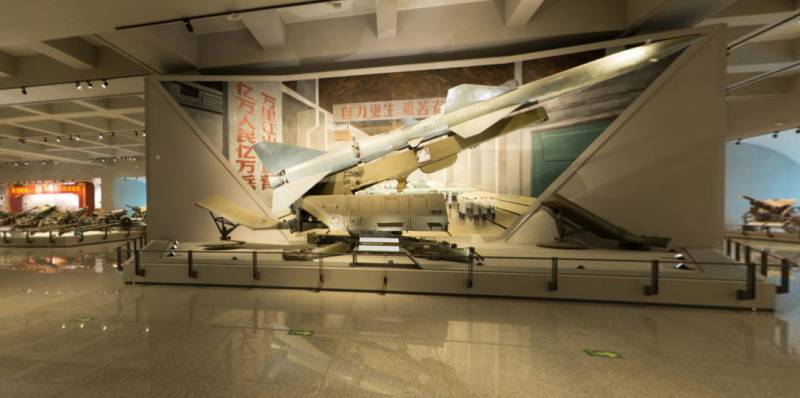
Missile launcher HQ-2 on a launcher in the exposition of the Military Museum of the Chinese Revolution
American experts ruled out the possibility that weapons appeared in China that could shoot down air targets flying at an altitude of more than 20 km, and in the early 1960s, six Lockheed U-2C high-altitude scouts appeared in the Taiwanese air force. The U-2C aircraft could conduct reconnaissance from an altitude of more than 21 m. The duration of the flight was 000 hours, the speed along the route was about 6,5 km / h.
However, flights over mainland China were associated with great risk. In the period from November 1, 1963 to May 16, 1969, at least 4 aircraft were shot down by anti-aircraft missile systems. At the same time, two pilots successfully catapulted and were captured. Two more U-2Cs were lost in flight accidents, after which the raids of high-altitude reconnaissance aircraft from Taiwan stopped.
Currently, the wreckage of one of the high-altitude reconnaissance U-2C presented in the exposition of the Military Museum of the Chinese Revolution. There are also launchers of the HQ-2 complex with anti-aircraft missiles. Although later models seem to have much in common with the first Chinese NQ-1 air defense system, unfortunately there is no such missile in the exhibition hall.
However, this did not mean that the violation of the air borders of China stopped. In addition to the invasion of airspace by Taiwan, several American combat aircraft were shot down over the territory of China during the Vietnam War. While the Phantom pilots violated the border for the most part by accident, the unmanned AQM-34 Firebee scouts delved deeper into Chinese territory deliberately.
In 1966, on the basis of a package of documentation received from the USSR, the PRC created its own analogue of Dvina - the HQ-1 air defense system. However, this complex in its capabilities no longer fully met the requirements of the military. Since in the 1960s, military-technical cooperation with the Soviet Union was practically curtailed, China lost the opportunity to legally get acquainted with Soviet innovations in the field of air defense. But the Chinese "comrades", with their characteristic pragmatism, took advantage of the fact that Soviet military assistance came via the PRC via rail to North Vietnam. Soviet representatives have repeatedly recorded the facts of the loss during transportation through Chinese territory: radars, elements of anti-aircraft missile systems and anti-aircraft missiles.
After Chinese experts gained access to the more advanced Soviet S-75 Desna air defense systems and the Volga S-75M air defense system and the V-755 air defense missiles delivered to Egypt, the HQ-2 air defense system was created in China with a guidance station operating in 6 -cm frequency range. The new complex had an increased firing range and improved noise immunity. Currently, China continues to operate the HQ-2J air defense systems built in the second half of the 1980s. But as new complexes with solid-fuel missiles arrive, the Chinese analogue of the S-75 is brought out of operation.
To be continued ...
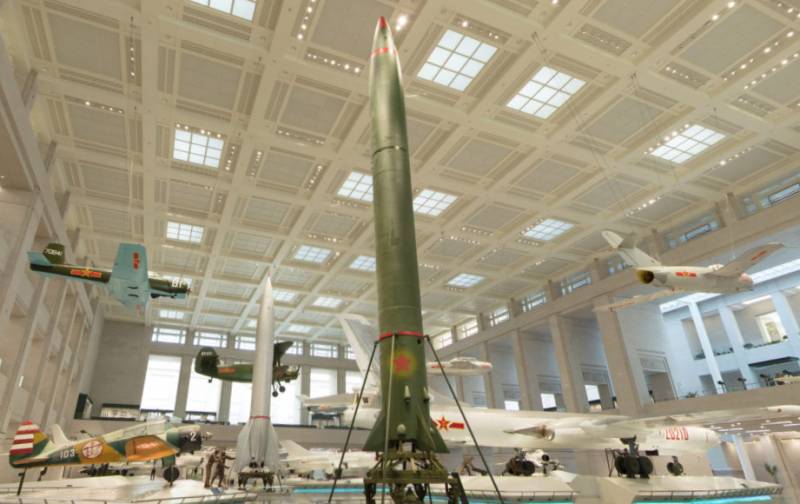
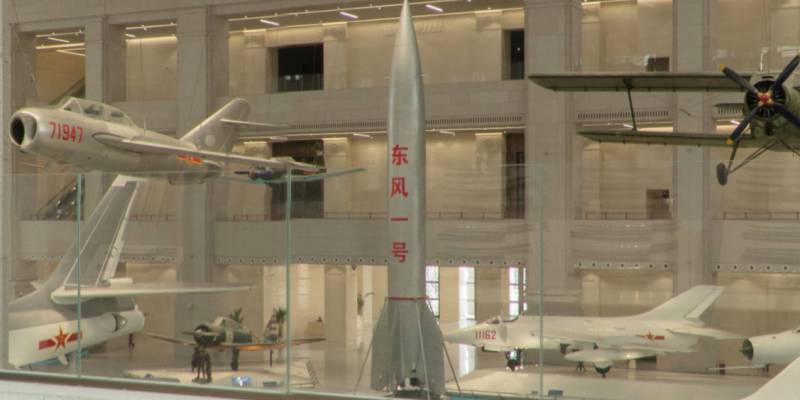
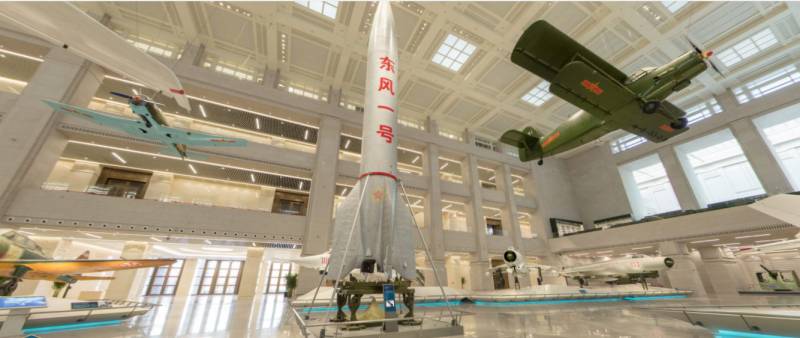
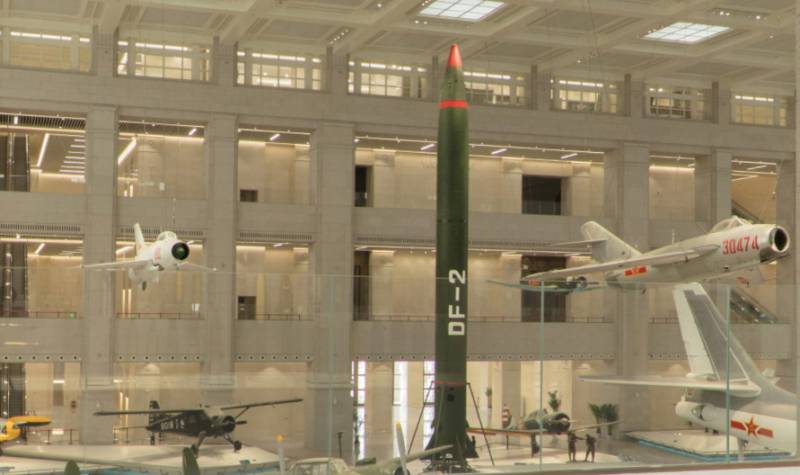

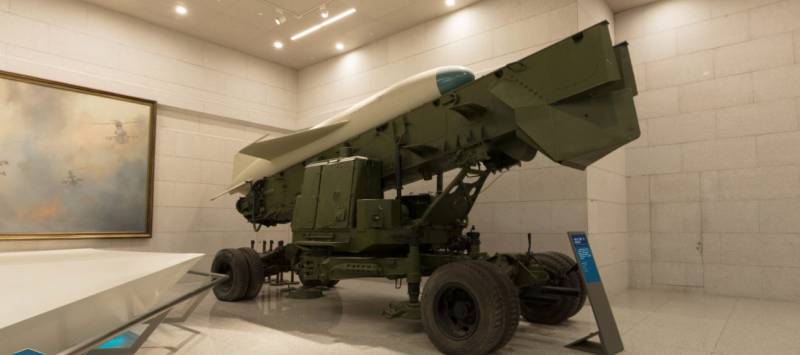
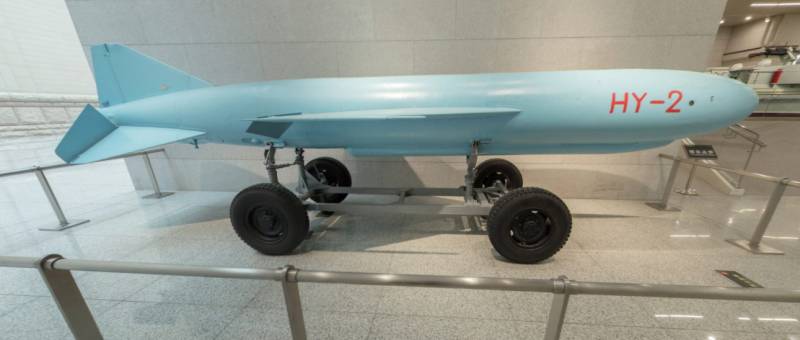
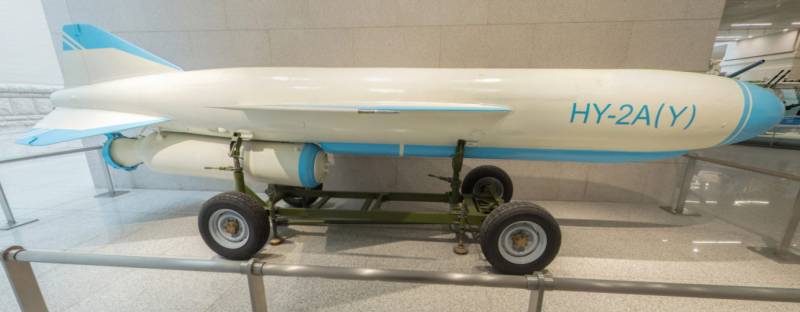
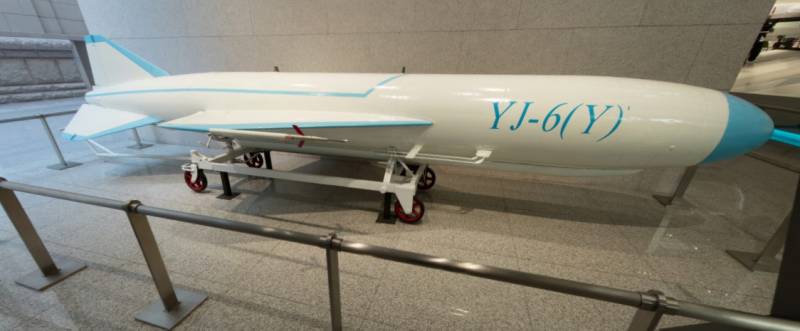
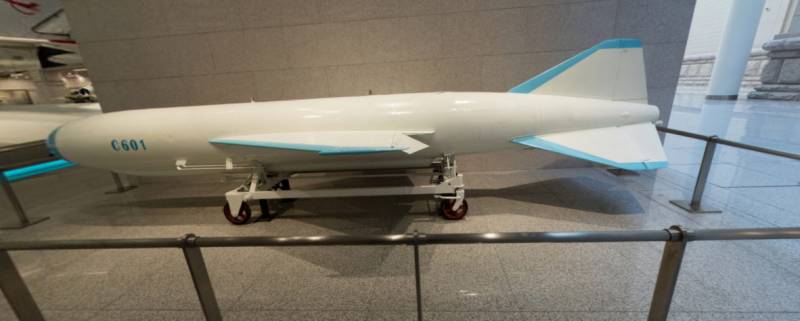
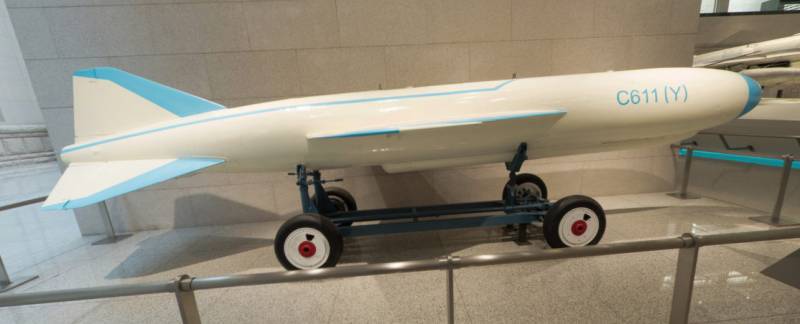
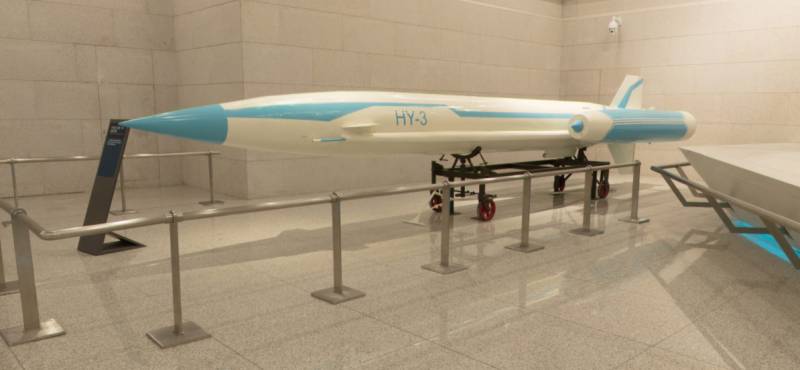
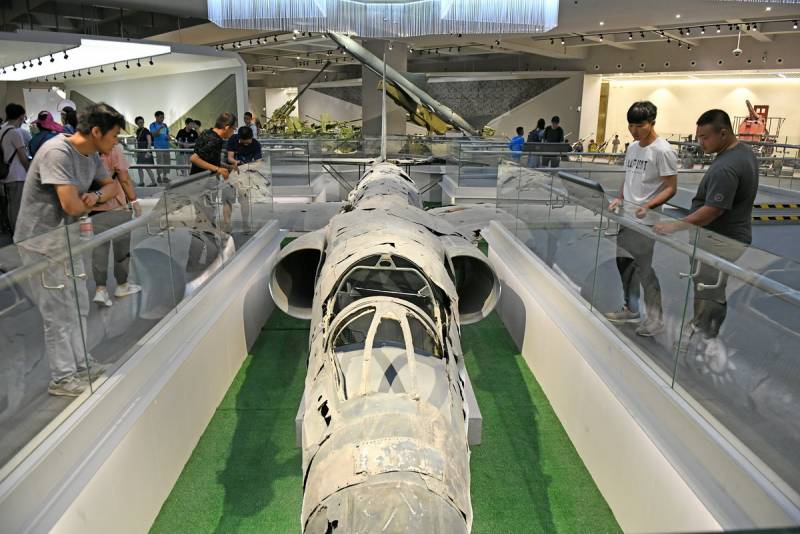
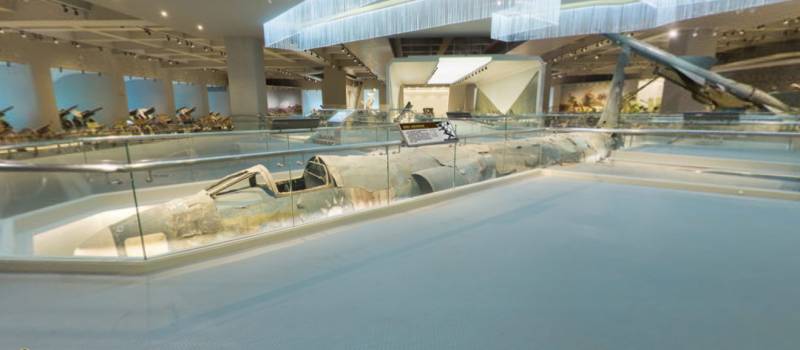
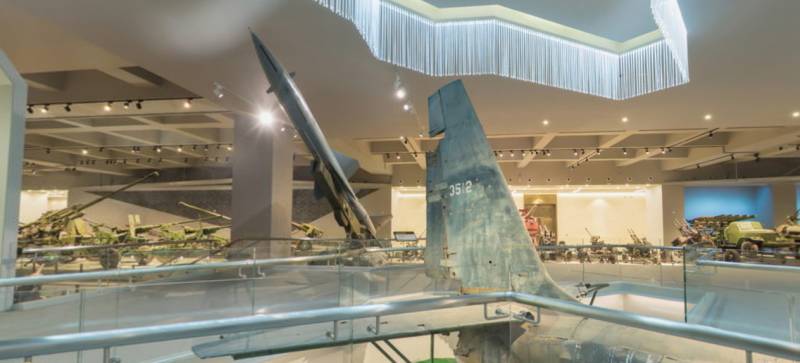
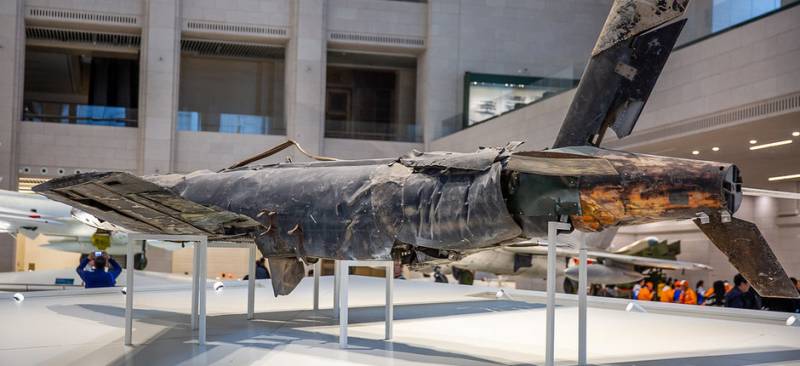
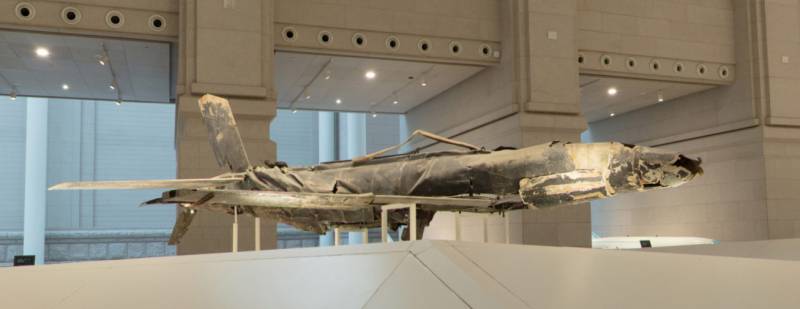
Information